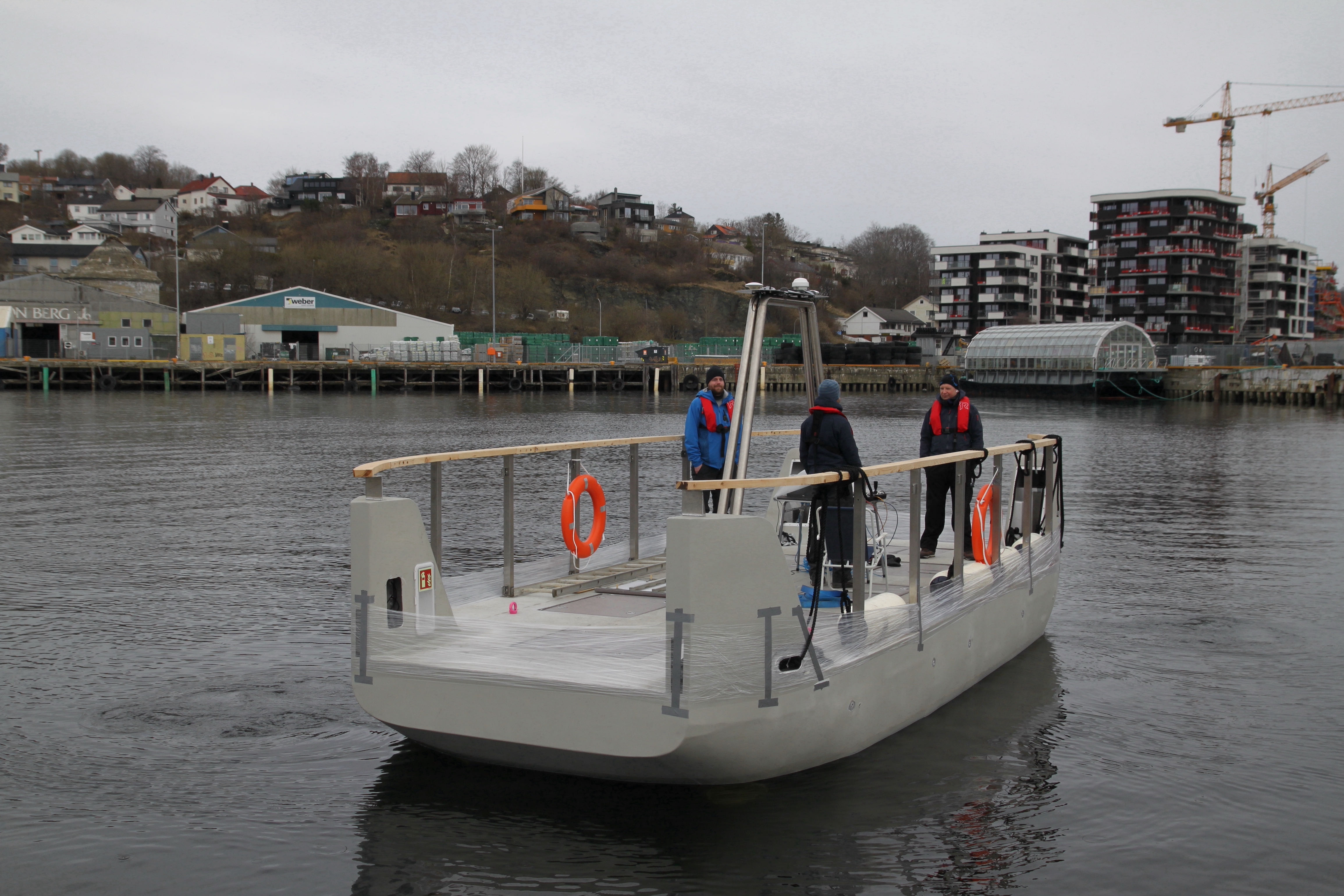News - Autoferry
News
News
Blogs
Yesterday Trondheim got a visit from a French delegation representing the summer olympics in Paris 2024. They came to attend the demonstration of the worlds first full-scale autonomous ferry for urban waterways with the hope that such vessels can be used to transport people on the Seine during the the games. The demonstration was a cooperation between NTNU and the spinoff-company Zeabuz who is commercializing the technology and must be said to be a success with even the notorious Trondheim weather playing along. To hear more about the demonstration, check out this news clip from nrk (Norwegian).
The full-scale prototype of our autonomous ferry is now on the water! According to Egil Eide who was present for the launch the ferry runs very smoothly. As for now it is functioning like a manned boat, but soon it will be going back into the workshop to be fitted with everything needed for autonomous operations.
Does an autonomous ferry need a Captain?
- Yes, say designers. But it requires a re-thinking of what being 'Captain' means.
In the past year, we've gotten used to remote work. We meet on Teams, share files on OneDrive, and brainstorm on Miro. Chatter that once happened around the coffee machine now takes place on Discord and Slack while we sit at home in the sonic bubble of our headphones. For students and researchers, this transition has been more or less straightforward. But how might we envision the remote work for others?
How might we envision the 'home office,' for example, for ferry Captains?
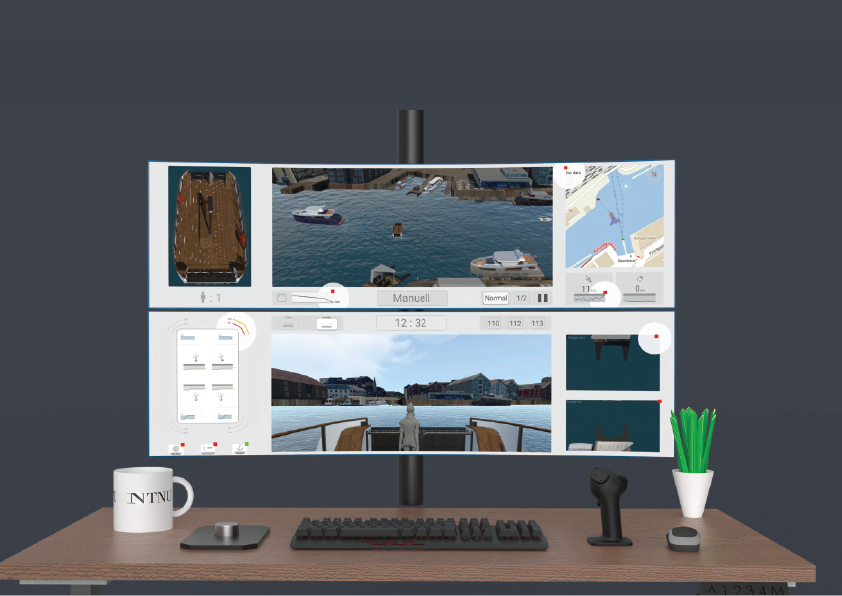
Is this the 'home office' for the Captain of an autonomous ferry? (Credit: Edvard Liodden)
At NTNU, we are leading the charge towards autonomous ferries. In just the past two years, milliAmpere has been breaking waves in sensor fusion and Autoferry Gemini has caused a splash in the field of digital twins. As we speak, some of the brightest students and researchers in the country are connecting the hardware that will drive the autonomy system in the milliAmpereII: the full scale prototype borne out of the Autoferry project.
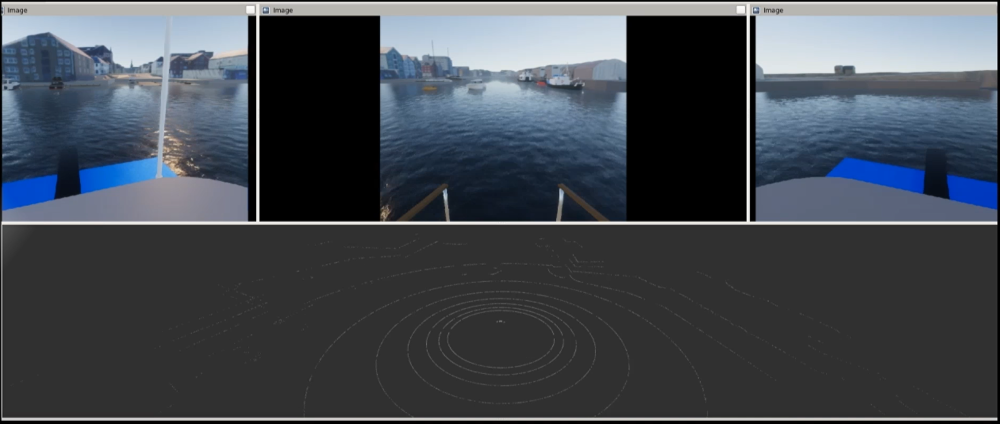
The Autoferry Gemini simulator will let designers understand what information a Captain needs to remotely operate an autonomous ferry (Credit: Thomas Skarshaug)
Meanwhile, in the face of this rapid development, the question has become more pressing: does an autonomous ferry need a Captain?
The Autoferry project has long predicted that the Captain will be just as important as with manually controlled ships - the job will just look a bit different. Now, the Department of Design is sharing their vision of what the future of marine operations looks like. For years now, Design has been developing competence in this area, positioning new technologies in the larger context of humans and organization. Now they are turning vision into reality at the new Shore Control Lab.
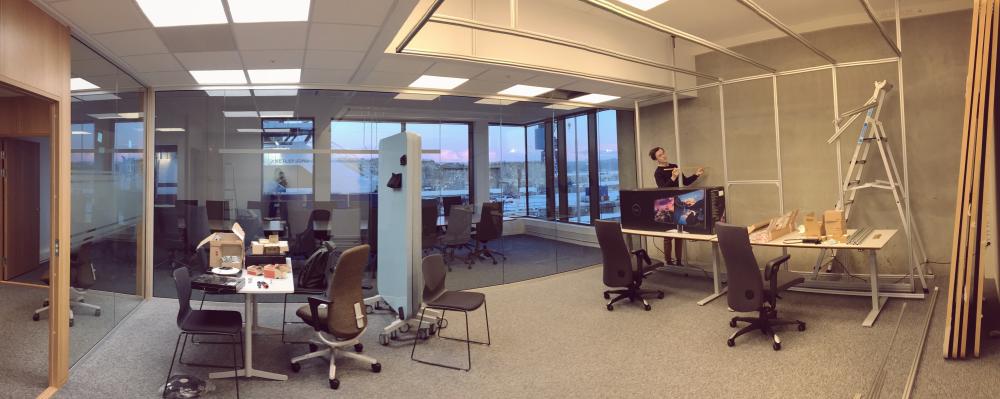
Research Assistant Thomas Kaland helping to construct the new Shore Control Lab at Nyhavna (Photo: Erik Veitch)
In the coming months, the new Design-led Shore Control Lab will be ready at the Nyhavna campus in Trondheim. One of the first questions that will be researched by the team behind the Shore Control Lab is Can video games be used to research human-machine interaction of autonomous vessels? (Hint: they think the answer is 'yes.') Among the efforts in place is using Unity to prototype the shore control centre of the future, building off the progress made in the open source Autoferry Gemini simulator.
The mission of the lab is simple: to 'keep humans in the loop.' The question of how to keep humans in the loop in face of challenging remote operations and autonomous systems remains, for the time being, unanswered.
Are you a student who wants to get involved? Or just looking for more info? You can get in touch through the Shore Control Lab website.
A little heads ups that our little MilliAmpère has made an appearance in the online magazine Tondheim2030. The magazine is published by the department for urban development in Trondheim komune (Kommunalområde byutvikling) and aims to give the public an overview of the projects the department is working on in a readerfirendly and engeging manner. Check out the article here (Norwegian).
Telia, together with Ericsson has upgraded the mobile network around Ravnkloa to 5G. Telia has also provided 5G-equipment that allows MilliAmpère to communicate with the control center via the mobile network. Check out the press release here (Norwegian).
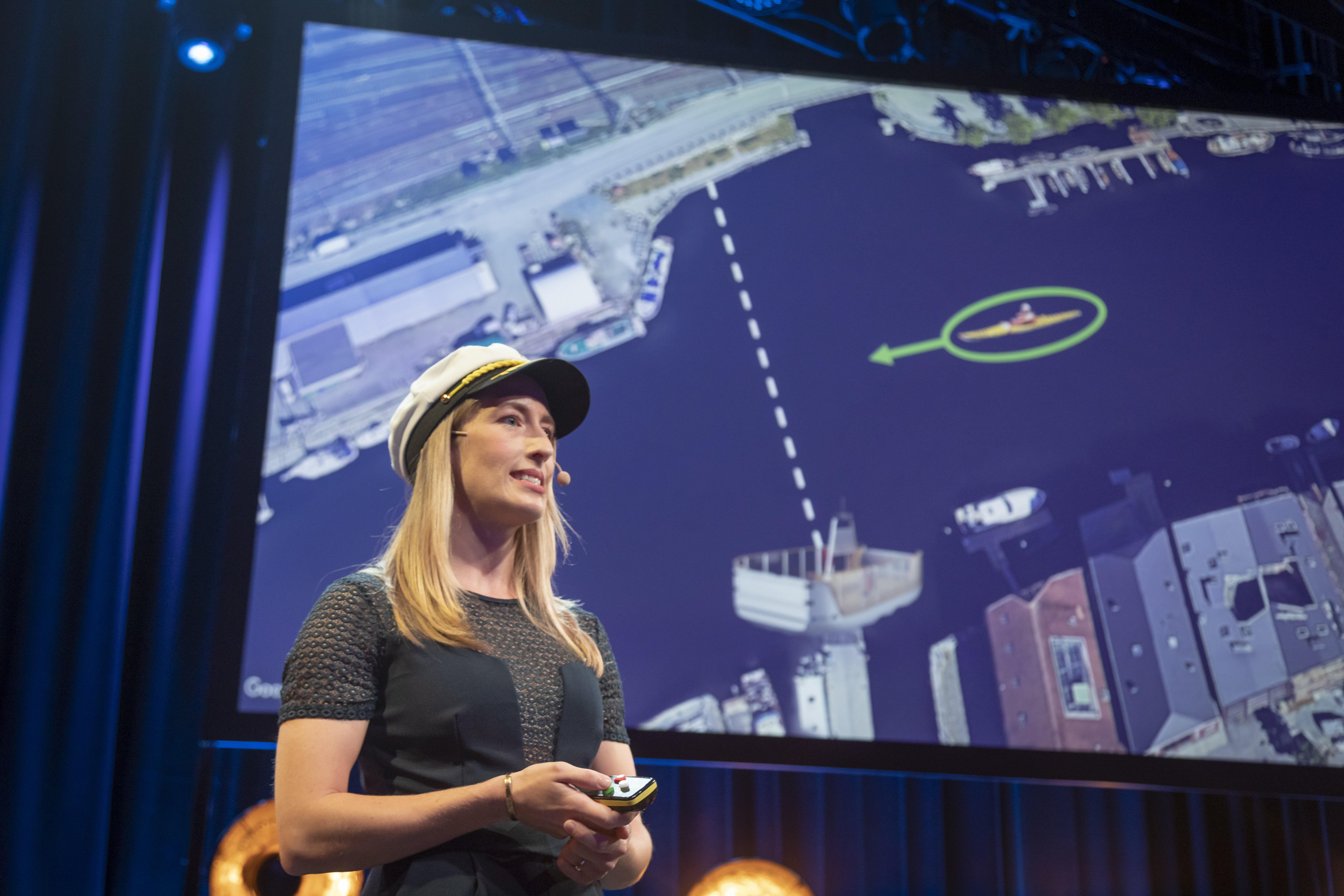
Yesterday I presented my research in the Autoferry project at Byscenen, Trondheim, in the research dissemination competition Forsker Grand Prix. The set-up is simple: Ten candidates get four minutes each to present their work to the public and a jury. Three of them are voted on to do a further four-minute presentation where the top two get to go to the national finale, this year in Stavanger.
I did not go on to the finale, but this has truly been a great experience! In addition to what I've learnt about storytelling, visualization and stage presence, I also got to know nine other PhD students working on completely different areas of research than myself. We've been working together, giving each other feedback and advice throughout the process and it was amazing to see the everybody giving it their best on stage yesterday!
The national finals in Stavanger are on Saturday 28th of September, and for those who are interested there is also a live stream. Best wishes to Ola and Daniel who are representing NTNU this year!
The Autoferry stand at Ocean Week 2019 is now up and running. At the stand you can try the ferry simulator developed by students who participated in this year's Autoferry village for the Experts in Teamwork (EIT) course, represented in the photo by Kjetil Vasstein (left) and Thomas Skarshaug (right).
The simulator allows the user to add different sensors to the ferry and thereby makes it possible to test several sensor configurations without actually implementing them on the ferry.
The simulator will also be used to run collision avoidance scenarios, enabling us to thoroughly test the algorithms before we go out and test them on the real ferry.
Spring is upon us here in Trondheim and with that comes the end of this year's Experts in Teamwork (EIT) course and the Autoferje village. EIT is a compulsory course for all students in master's programmes and programmes of professional study at NTNU where the students work together in interdisciplinary teams with the aim of improving their cooperation skills. The Autoferje village consisted of 5 teams of 4-5 students working on projects related to the Autoferry project. The topics they chose were:
- Ferry/passenger interface
- Testing of radars for detection and docking
- Creating a simulator for visualization
- Passenger counting and embarking/disembarking experience
- Investigation of different camera solutions for passenger counting
The deadline for the reports has still not passed, but we are all very excited to see what they have come up with!
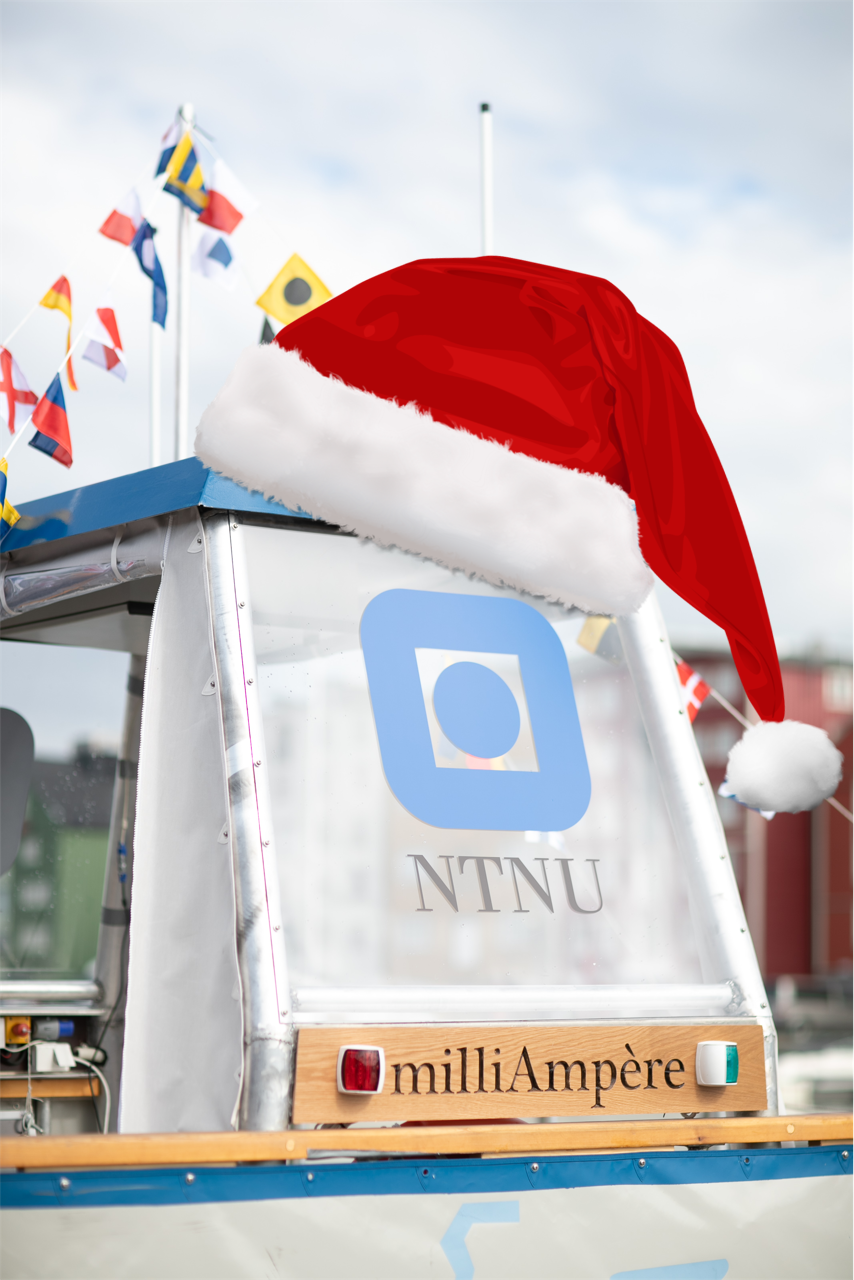
It has been a long and busy fall with little time for writing blog posts, but before you go in to complete holiday mode I suggest you check out this article (Norwegian) in Navigare, the journal of the Norwegian Sjøfartsdirektoratet. The magazine contains an interview with one of our main ferry people, Egil Eide talking about the project and the successful demo at Sjøsikkerhetsdagene in Haugesund. As a little holiday bonus you'll get to see a full page photo of Egil and milliAmpère on the cover!
Happy holidays everyone!
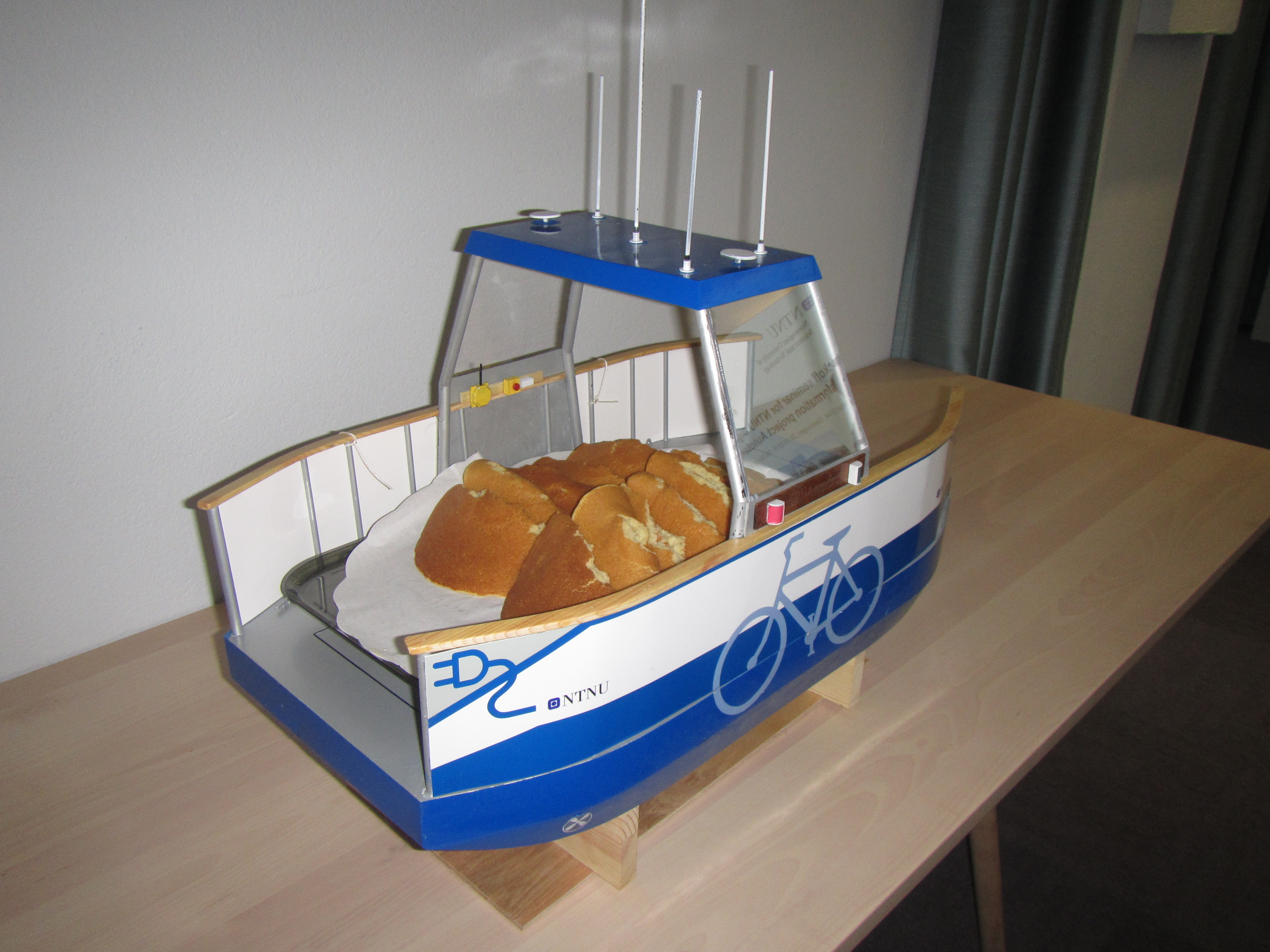
Yesterday the Autoferry Project had its official kick-off, gathering key people from the different campuses and departments involved. Also present was a model of our fabulous milliAmpère, serving the mandatory Norwegian ferry food sveler. The program consisted of presentations of the people involved, discussions on project plans and collaboration possibilities and how to involve industry, authorities and last, but not least students.
Hopfully this meeting will mark the start of a period with more activity and more frequent updates on this blog!
Last week associate professor Egil Eide along with students Tobias Torben and Brage Sæther went to Haugesund with milliAmpère to visit Sjøsikkerhetskonferansen (conference of safety at sea). This of course generated a bit of attention, so here's the links to some articles/videos from the demonstration.
TVHaugaland - Her kjører den førerløse ferga i Smedasundet.
NRK TV - Distriktsnyheter Rogaland - 26.09.2018: Førerløse ferger er framtiden at around 02.43.
Skipsrevyen - Førerløst over Smedasundet.
Teknisk Ukeblad (paywall). - Her demonstrerer de selvkjørende Milliampere.
The team working on MilliAmpère has spent most of the summer to fix known bugs, implementing a new software architecture and gui and sorting out some hardware issues, so no breaking news, but still very necessary.
However, the last few weeks Tobias Torben and Brage Sæther have been working on the MilliAmpère's dynamic positioning (DP) system, which is super important, especially with regards to docking. Following is a little video from some tests they did earlier this week.
While continuing work on the DP system, Brage is also working on getting a HMI running on a tablet to ease the testing of the ferry. This will display important system parameters and error messages and visualize servo angles. It will also make it easier to turn on/off docking mode and DP mode.
Another media update, in English this time! Milliampère is featured in the "World News" section in the latest The Week Junior Magazine, a British current affairs magazine for children between 8 and 14 years old. They might be jumping the gun a bit when they say that she's already transporting people across the canal, but we'll get there!
In the NRK Radio program Ferievikarene (27.06.2018) Stian Dyrnes and Egil Eide took reporter Nils Åge Nonstad on a little test drive with the ferry. Listen to Egil explain a bit about how the Autoferry project got started and the future of automated ferries. Skip to 32.40 or the section "Førerløse båter" to go directly to the Autoferry feature. (NB. Norwegian)
Update: They also made a little video, check it out here.
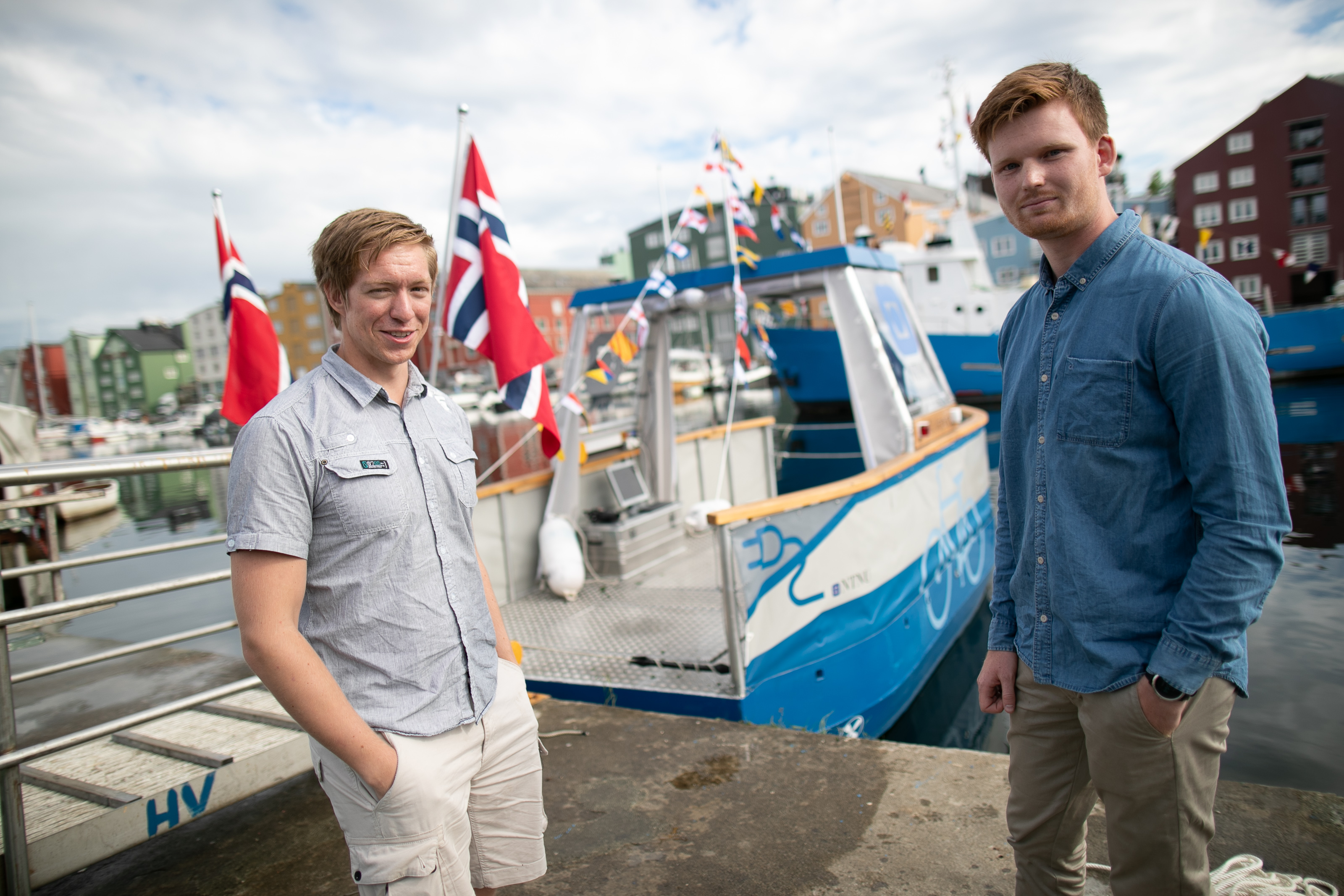
The big boss himself has taken the trip down to Ravnkloa to check out our ferry, and he liked what he saw. Check out the video he posted on his facebook page here. Also in the video are Stian Dyrnes and Tobias Torben who will spend their summer working on the ferry making it even more awesome.
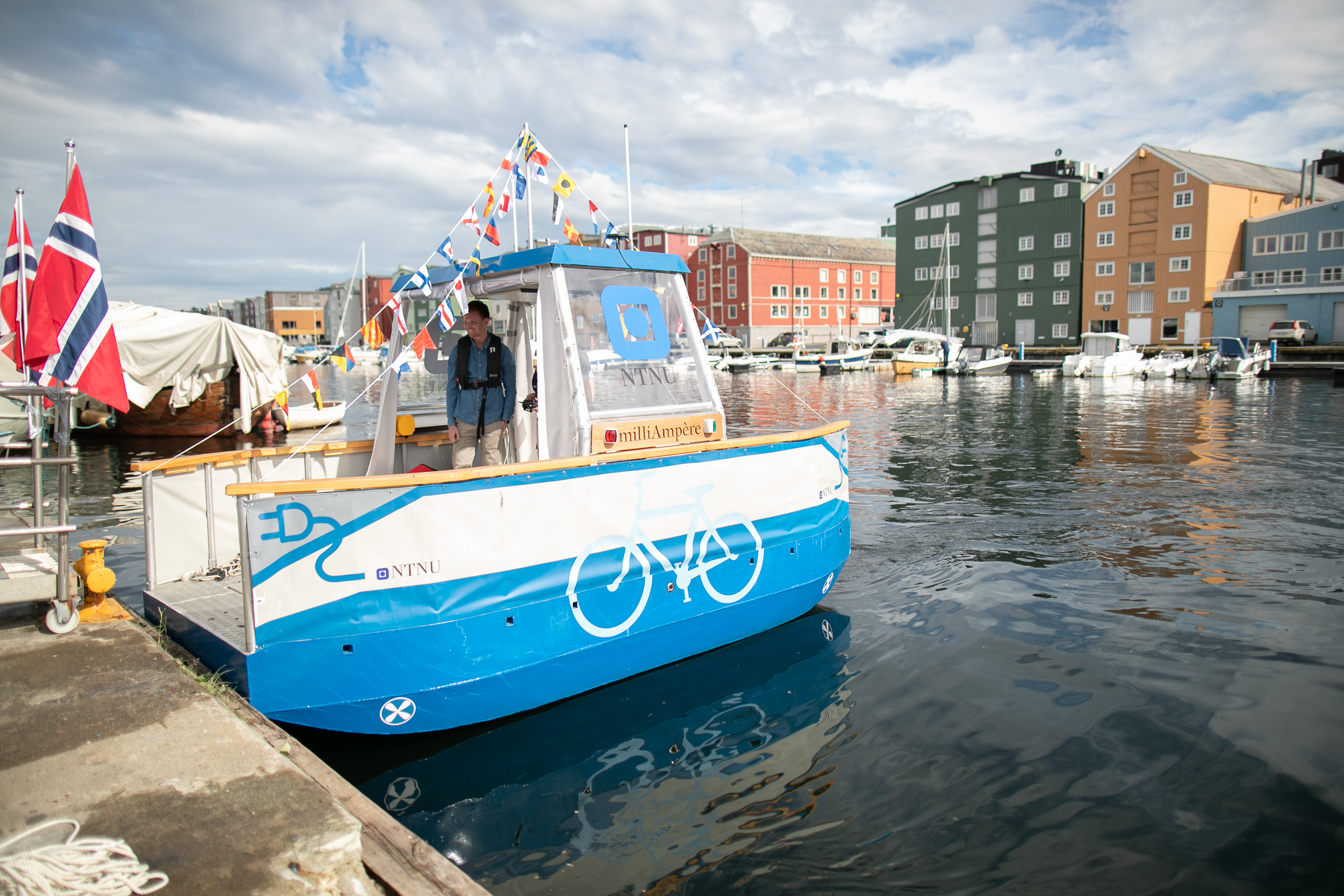
On June 18th 2018 our prototype ferry was christened "milliAmpère" during a ceremony at Fosen kaia in Trondheim. The traditional breaking of the champagne bottle seremony was performed by the ferry's godmother, professor Ingrid Schjølberg, who is also the director of NTNU Ocean.
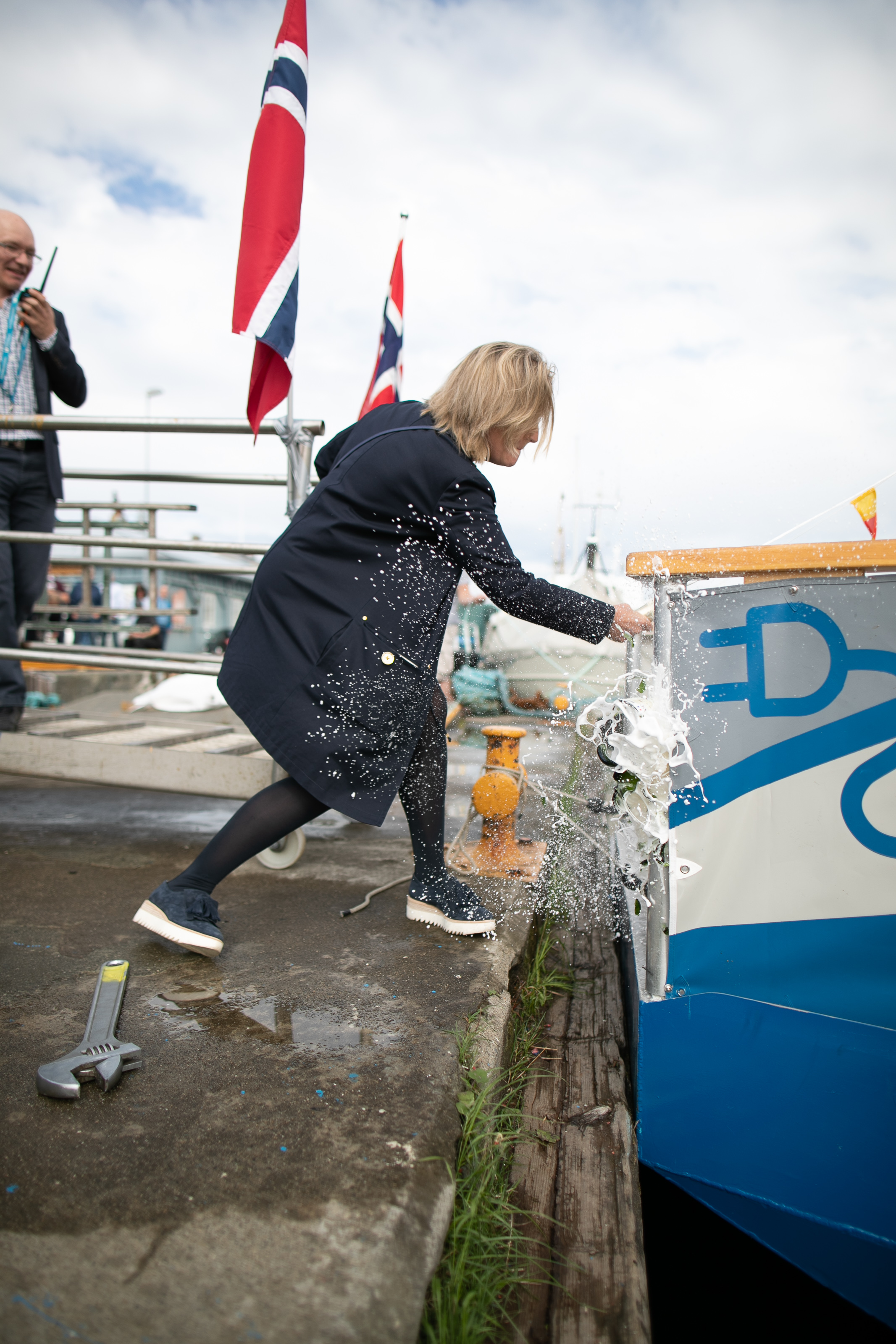
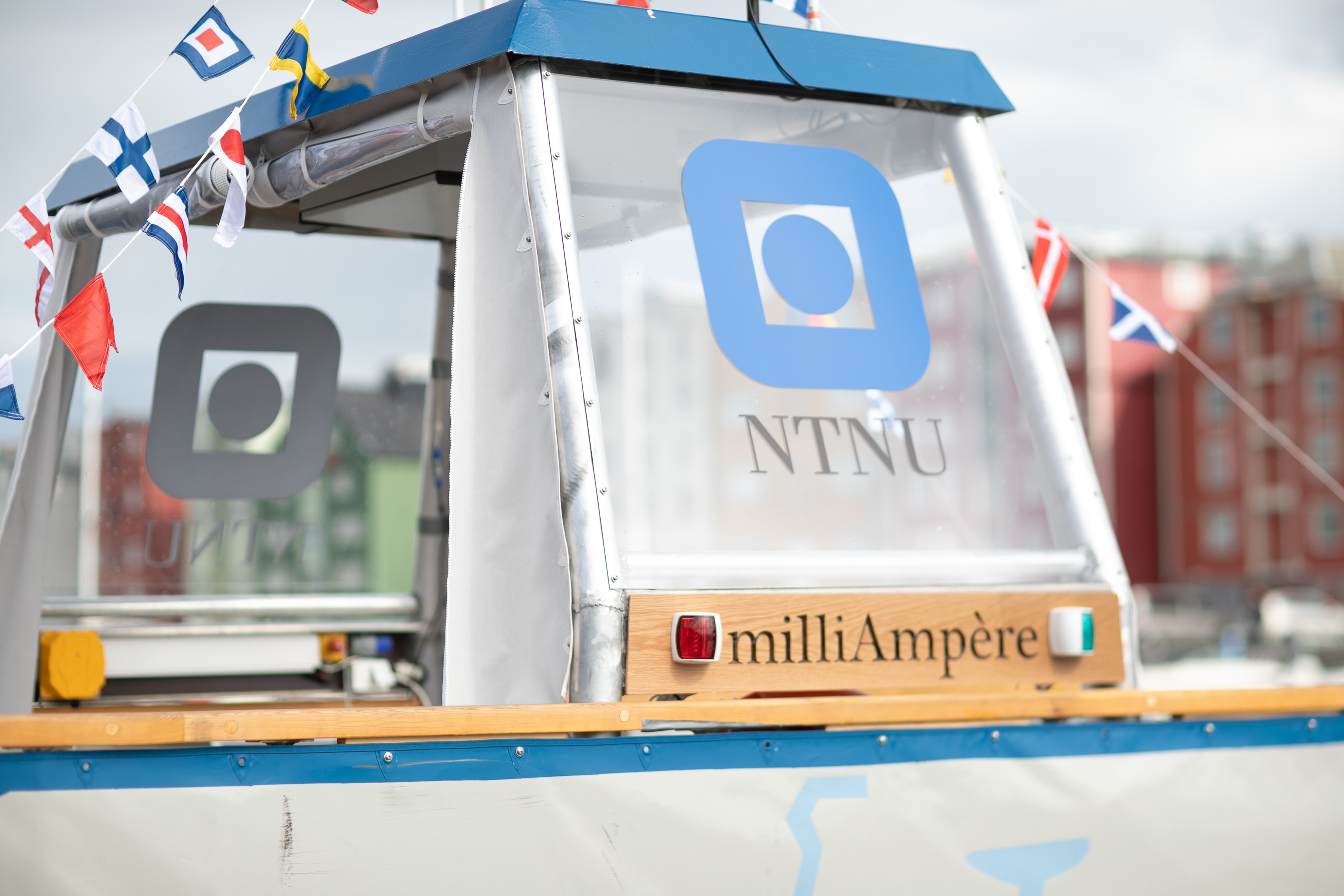
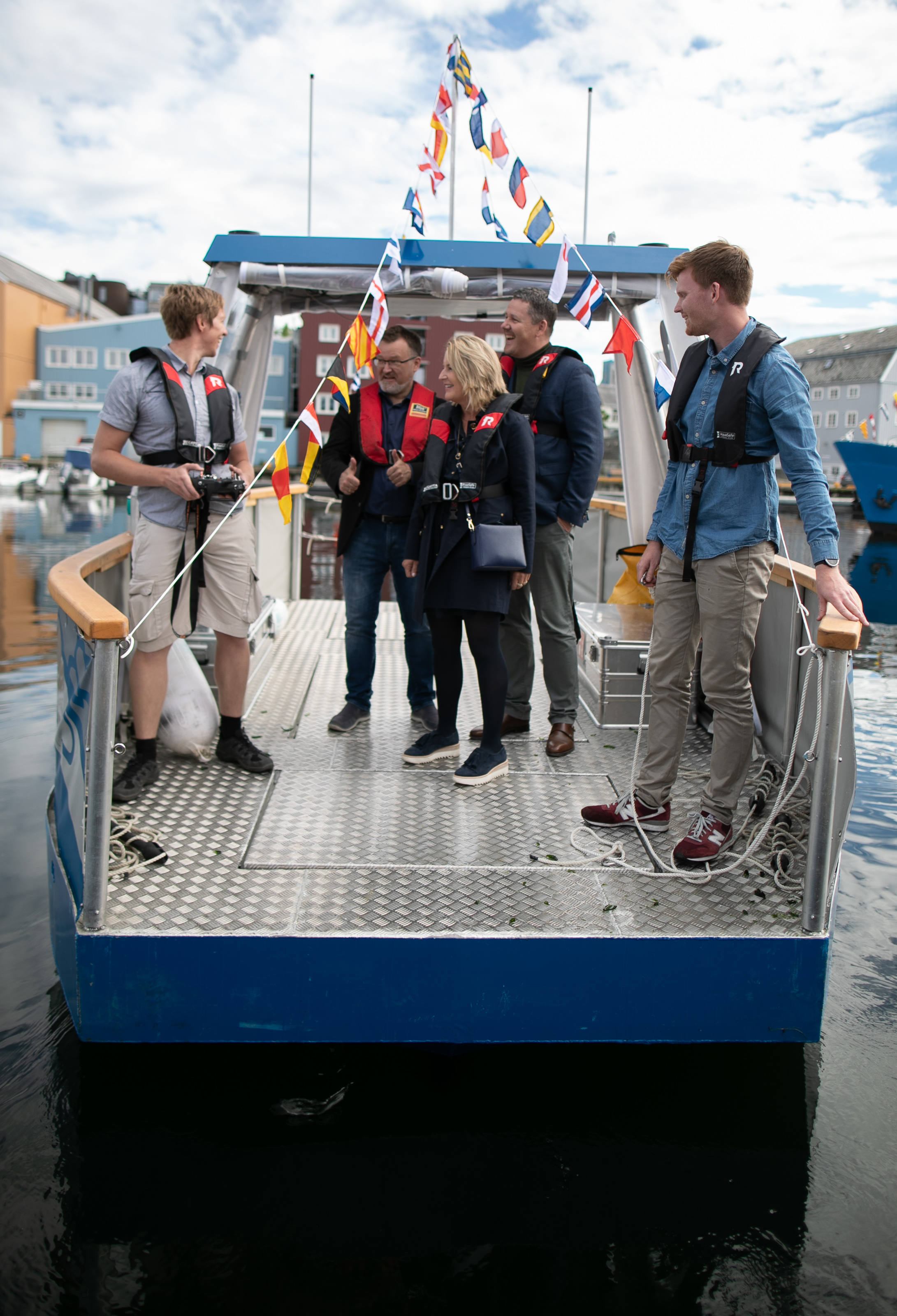
The event was celebrated with non-alcoholoc bubbles and the traditional Norwegian ferry food "sveler". After the ceremony, the ferry was ready for a little test ride. The ceremony finished with a couple of celebratory salutes from the retired NTNU research vessel "Harry Borthen".
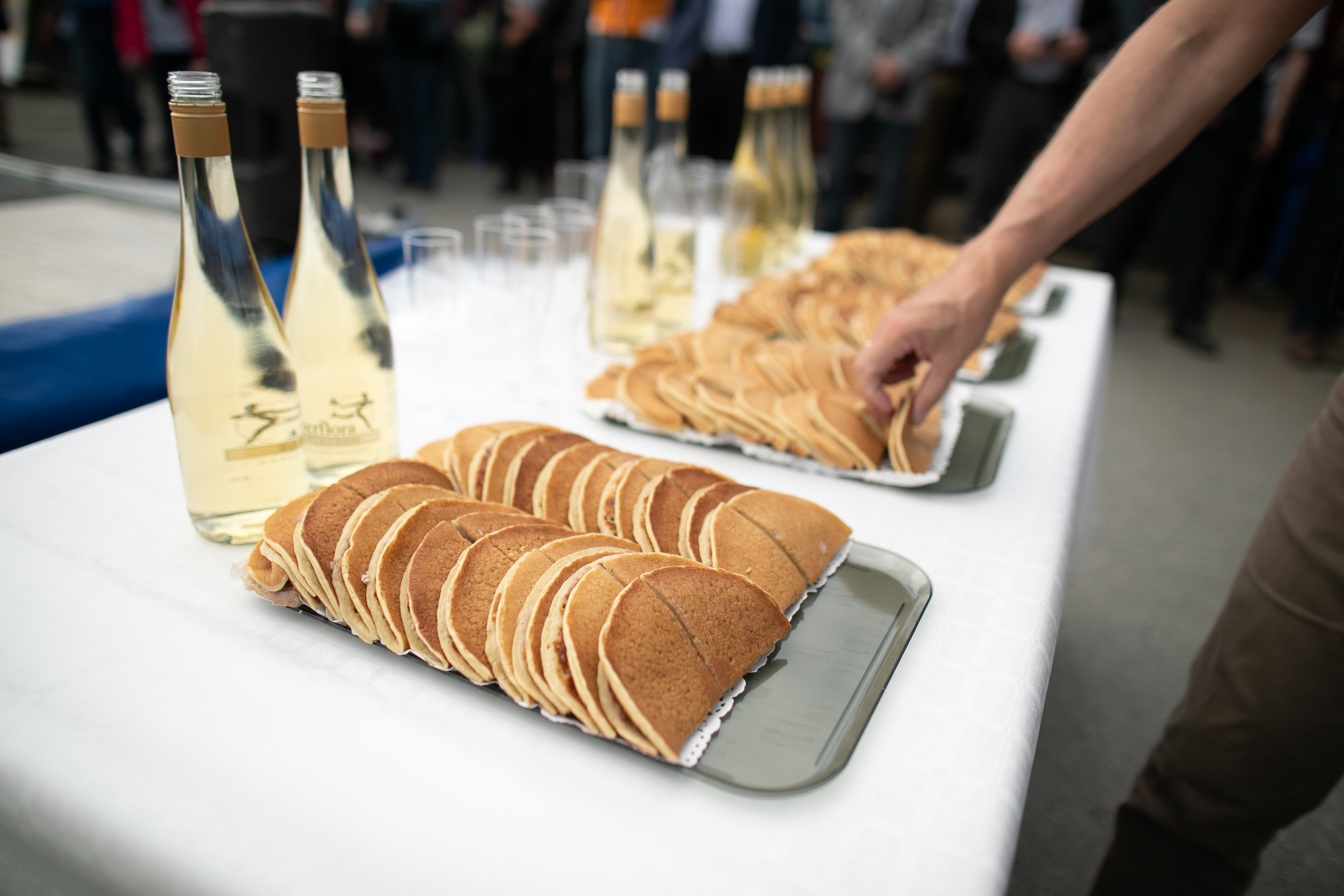
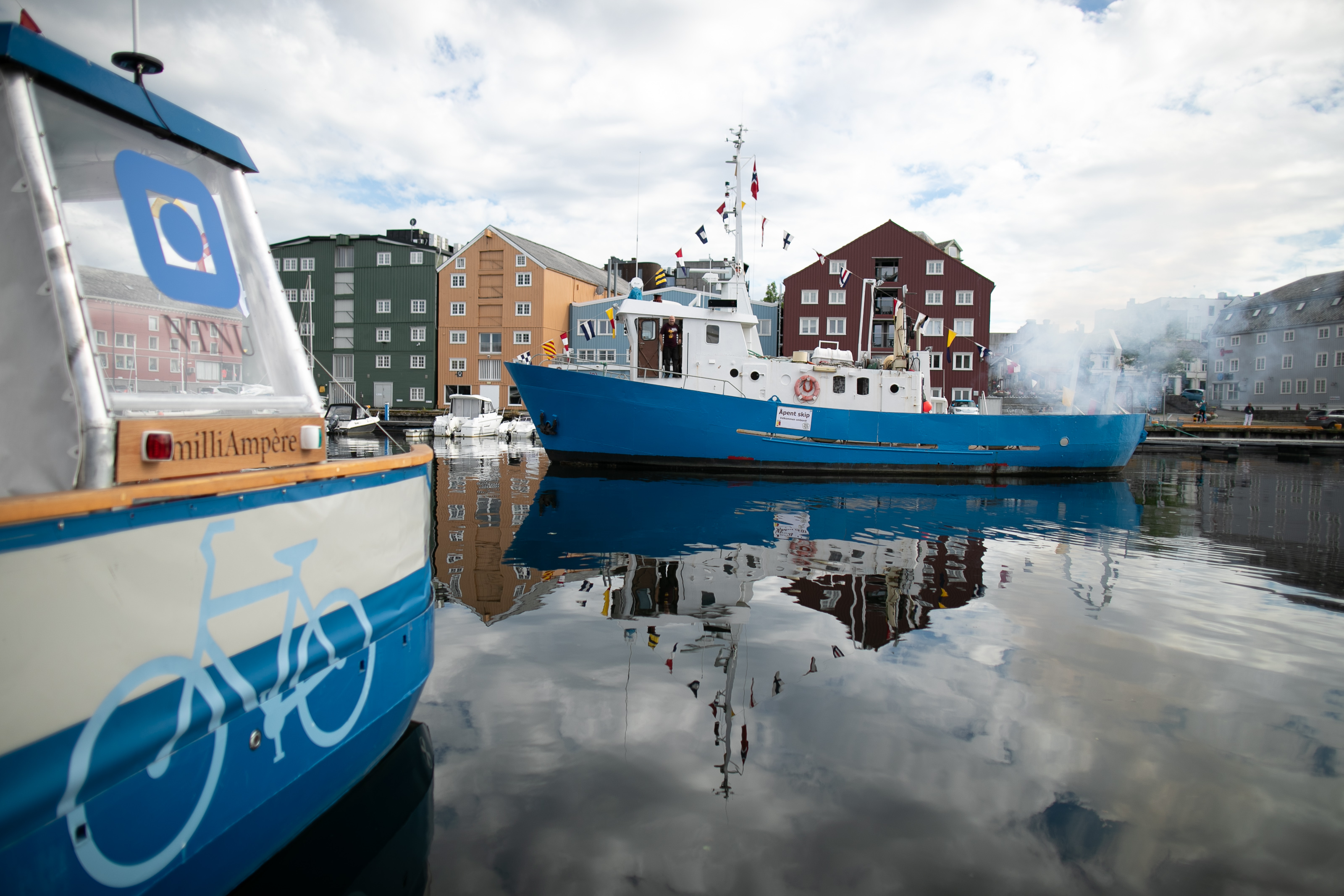
Photos: Kai T. Dragland / NTNU
For more photos from the event check out the Faculty of Information Technology and Electrical Engineering NTNU on flickr.
For students
For students
If you are interested in working with the project, check out our student project/master thesis proposals at autoferry.github.io.
Another option is to chose the "Nemo" village for the Experts in Teamwork (EIT) course where the question is: How can computer games be used to renew the maritime industry?
Related news
Related news
April 2022
February 2021
January 2021
- Teknisk Ukeblad - Autonomisimulator Gemini
September 2020
- Cyprus Shipping News - Ocean Autonomy Cluster testing with milliAmpere
May 2020
- Trondheim2030 - Slik kan den nye fløttmannen bli
February 2020
- Telia press release - NTNUs båt kjører førerløst på Telias 5G-nett
December 2018
- Navigare - Trykk på knappen - så kommer ferja
September 2018
- TVHaugaland - Her kjører den førerløse ferga i Smedasundet.
- NRK TV - Distriktsnyheter Rogaland - 26.09.2018: Førerløse ferger er framtiden at around 02.43.
- Skipsrevyen - Førerløst over Smedasundet.
- Teknisk Ukeblad (paywall). - Her demonstrerer de selvkjørende Milliampere.
August 2018
- Springwise - Autonomous electric ferry can be called like an elevator (paywall)
Juni 2018
- NRK Radio, P1+ - Førerløs ferge (video)
- NRK Radio - Ferievikarene 27.06.18
- Gemini - Førerløse ferger kan erstatte gangbruer
- Teknisk ukeblad – Asia kommer for fullt. Vi havner bakpå om vi ikke gir gass (paywall)

